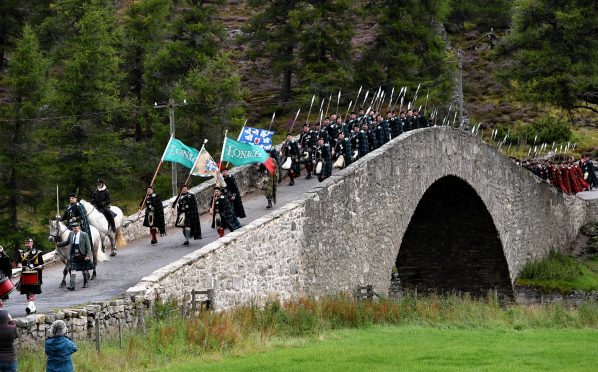Calls have been made to safeguard an 18th century Deeside bridge before it collapses.
The grade 1 listed Gairnshiel Bridge on the A939 Tomintoul-Ballater road, has been classed as weak and has had a temporary 18ton weight limit in place since December.
However, Aboyne, Upper Deeside and Donside Councillor Geva Blackett has raised concerns that heavy goods lorries are still going over the bridge because they are following their sat navs.
Ms Blackett claims repair work is inevitable which could lead to it being shut for six months causing major disruption for the surrounding communities.
She has now called for a “functional” bridge to be built adjacent to the structure to allow traffic to avoid it.
In a letter to Aberdeenshire Council’s infrastructure services director Stephen Archer, Ms Blackett said: “Almost exactly five years ago, this beautiful bridge was closed for some weeks to allow extensive – and expensive repairs – to take place and not for the first time.
“The resulting 40-mile detour caused chaos for motorists and had a severe impact on the fragile economies of Braemar, Ballater, Strathdon and Tomintoul.
“Now we find that despite the 18ton weight limit imposed, even more expensive and extensive repairs are required in the near future and as traffic increases with the snow road linking Grantown to Blairgowrie gains in popularity, so too will the need for major repairs as the bridge is no longer fit for purpose.”
Aberdeenshire Council’s bridges and structures manager, Donald Macpherson, said: “We are regularly monitoring the structural condition of the bridge and are presently determining remedial options and appropriate timescales, but at present there are no firm plans for any works to take place.
“In the meantime, there is an 18-tonne vehicle weight restriction in place on this bridge and we would urge all affected drivers to observe this, use the clearly signed diversion route if necessary and respect this historic bridge.”
The bridge has been closed a number of times over the years to allow repairs to be carried out, most recently in 2012.
It was first erected in 1753 to form part of the Old Military Road, which connected Blairgowrie and Fort George, following the Jacobite Uprising eight years earlier.
